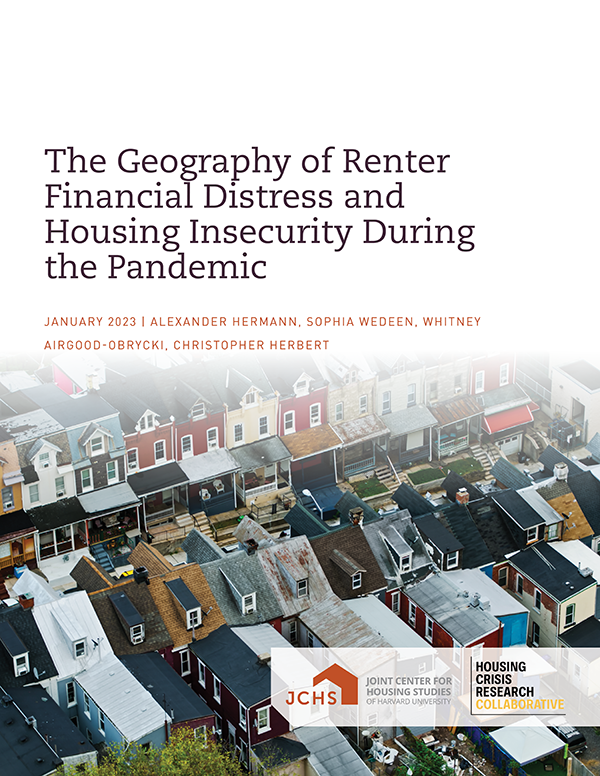The Geography of Renter Financial Distress and Housing Insecurity During the Pandemic
Using restricted-access data from the US Census Bureau’s Household Pulse Survey containing detailed geographic information about where respondents live, this paper assesses the financial distress renter households faced by neighborhood characteristic during the COVID-19 pandemic. Between April 2021 and February 2022, 23 percent of renters lost employment income in the month before they were surveyed, while 15 percent fell behind on their housing payments. But the financial distress renters faced was not evenly dispersed by neighborhood type across the country. Renters living in communities of color, and in high-poverty, lower-income, and lower-rent neighborhoods were more likely to experience financial distress. Given that renters are highly concentrated in a relatively small share of neighborhoods, this financial distress was also geographically concentrated. Indeed, more than three-fifths of renters behind on their housing payments lived in communities of color, while about two-fifths lived in high-poverty or lower-income neighborhoods. Lastly, this paper estimates the extent to which emergency rental assistance application and acceptance rates vary by neighborhood type, finding that neighborhoods with the greatest rates of distress also had the highest ERA application and acceptance rates, which indicates that ERA generally reached the neighborhoods with the greatest need despite other challenges. We conclude with the policy and research implications of our findings.

